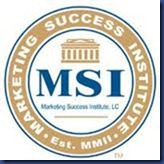Please share your experiences (good or bad) of working with accounts
I know a lot of small-business owners—especially start-ups—that try to do all their taxes and accounting themselves. The cost intimidates them. They don’t consider their business complicated enough to require an accountant. They share lots of reasons. I found the money I spent on a professional once a year saved me 3-4 times what I paid them.
David’s Story
David ran an IT consulting business from his home. He combined project work with consulting for 10-13 mid-sized businesses to provide a comfortable living for his family. He still operated as a sole proprietorship. He used one of the on-line tax systems to prepare his taxes.
One year, one of his clients created a glitch in the payment for a 4 month project. David decided the complication warranted going to a CPA. Not only did the CPA easily resolve what David considered a significant problem. She also asked questions his cousin never asked. The size of the tax savings surprised David. He saved more than 4 times the money he spent on the accountant. The accountant also highlighted liabilities that a sole proprietorship offered that an LLC could prevent.
David followed the advice and went to an attorney to change the legal structure of his business. He also told his cousin that he no longer required his services. David continues to work with his accountant once a year. He remains grateful for the money she saves him.
Why and How to Select an Accountant
Certified Public Accounting (CPA) professionals provide a number of benefits to business owners. I share these courtesy of David Mills Certified Public Accountant:
- Recommending income tax planning strategies
- Preparing tax returns
- Reviewing a company’s accounting system and recommending improvements
- Consulting on business problems and advising ways to improve the use of resources
- Assisting in the design and installation of data processing & IT systems
- Conducting special studies (financing, inventories, cost accounting, credit, & collection) for your business
- Helping you apply for loans and credit by gathering and preparing information required by lenders
- Working with clients, attorneys, and bankers on mergers, acquisitions, and expansions
- Advising individuals on personal finance planning, including retirement & estate planning
Several sources can help you find a CPA. You can find the accountancy board that regulates CPA’s in your state. I like the article the Ohio State Accountancy Board shares with residents. They encourage people to
- Verify the license status with the accountancy board
- Verify that the accountant maintains continuing education requirements
- Interview your prospects. Ask them “What kind of accounting work do you typically perform?”. Compare their answers with your needs.
- Ask for office hours and how long they are open (many only open during tax season)
- Explore if they participate in peer review, and the date and results of their last one
- Use an engagement letter to detail the work to be performed for, who will perform the services, the cost of service, and the duties and responsibilities of the CPA. The Ohio board states “The Board receives many complaints from consumers against CPAs that allege the CPA performed services either of poor quality or incorrectly, and in the majority of these cases there was no engagement letter that clearly described the agreement between the consumer and the CPA. As a result, both the consumer and the CPA can offer only verbal recollections of the engagement's scope to the Board, and the Board is limited in its statutory ability to discipline CPAs for substandard work.”
Avoid Accountants that Can Get You In Trouble
I especially like the this advice: “It is now possible to purchase public accounting services on the Internet. While this appears to be a convenient way to access a broad range of services, it is important to "do your homework" before selecting a practitioner. Keep in mind that because Internet practice involves no face-to-face client contact, it may be easier for unqualified persons to masquerade as licensees. Also, remember a practitioner offering services on the Internet may be physically located anywhere in the world. To provide CPA services to consumers in Ohio, a practitioner should be licensed as a Certified Public Accountant or Public Accountant by the Accountancy Board of Ohio, or must be practicing in Ohio incident to the licensee's home-state practice under Section 4701.15 of the accountancy law. A licensee practicing in Ohio under a home-state license must be a currently licensed CPA in the other state. Check our list of Accountancy Boards in the USA for further information about other accountancy boards.”
You can find additional information at the American Institute of CPA’s. Do not let the perceived expense of a CPA discourage you from taking advantage of their expertise and protection. They will usually save you more money than you pay them. Accountants are worth your money.
Join us next week when we discuss finding funding and financing for your business
Please share your experiences (good or bad) of working with accounts




